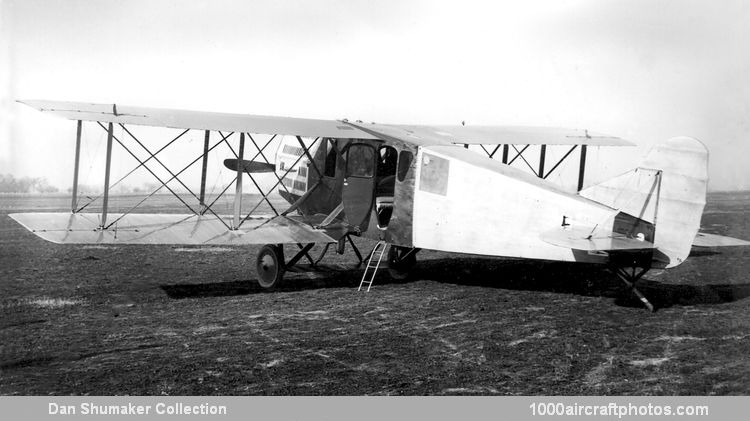04/15/2021. Remarks by Johan Visschedijk: "The prototype Ansaldo A.300 single-engine two-seat military biplane first flew in 1919. Subsequent versions were the A.300/2 to A.300/6, and several hundred were built for military service. In 1921 two civil transport versions appeared, and these, together with some of the military aircraft, were built by Fiat.
The first of the civil aircraft was the A.300/C, a two-bay strut and wire-braced biplane with accommodation for two pilots and four passengers. It is thought that the structure was of wood, although provision was made in the design for the use of steel longerons. The wings were of equal span fabric covered, and lower and upper wings were fitted with unbalanced ailerons. Two sets of diagonal struts ran from the center line of the cabin walls outward to the upper and lower wings.
The fuselage, which occupied the entire gap between the wings, was ply-covered in the cabin area and fabric covered aft. Side-by-side pilots' seats were in the front of the cabin, but the view was severely restricted by the engine cowling, which was unusually deep. There were two aft-facing and two forward-facing passenger seats. The tail plane was wire-braced and the rudder and elevators balanced.
The landing gear consisted of two sets of V-struts attached beneath the diagonal wing struts, an airfoil-section covered cross-axle and two sets of V-struts which, in front view, formed a W.
SNETA in Belgium acquired an A.300/C in 1921 which was registered O-BAHF (c/n C.6003). It passed to Sabena in 1923, but its registration was cancelled in November 1925. It is not known whether this was the above pictured prototype, although no other civil registered A.300/Cs are known.
The second version was the A.300/T. This had an eight-seat cabin, and the pilot was in an open cockpit behind the cabin. The wing area was increased, a curved decking added to the fuselage top and a biplane tail unit fitted. The bottom tail plane was placed lower on the fuselage than in the A.300/C and the upper tail plane was attached halfway up the fin. The upper and lower elevators were strut-connected at their inner ends. Only one A.300/T is known, which was registered I-ARNO, but there is no record of its entry into airline service.
Both the A.300/C and A.300/T were powered by 300 hp Fiat A. l2bis six-cylinder liquid-cooled in-line engines which drove two-blade wooden airscrews."
